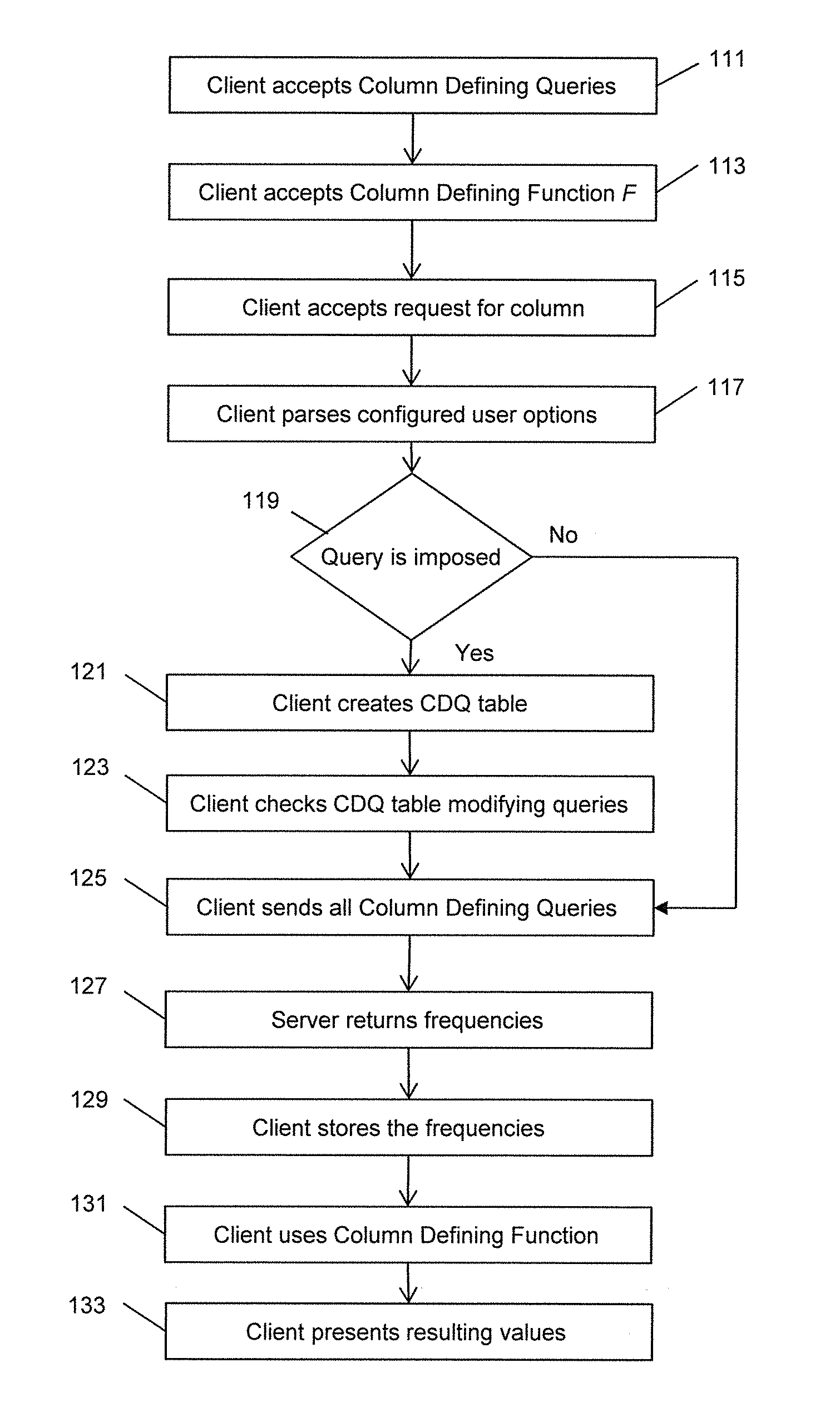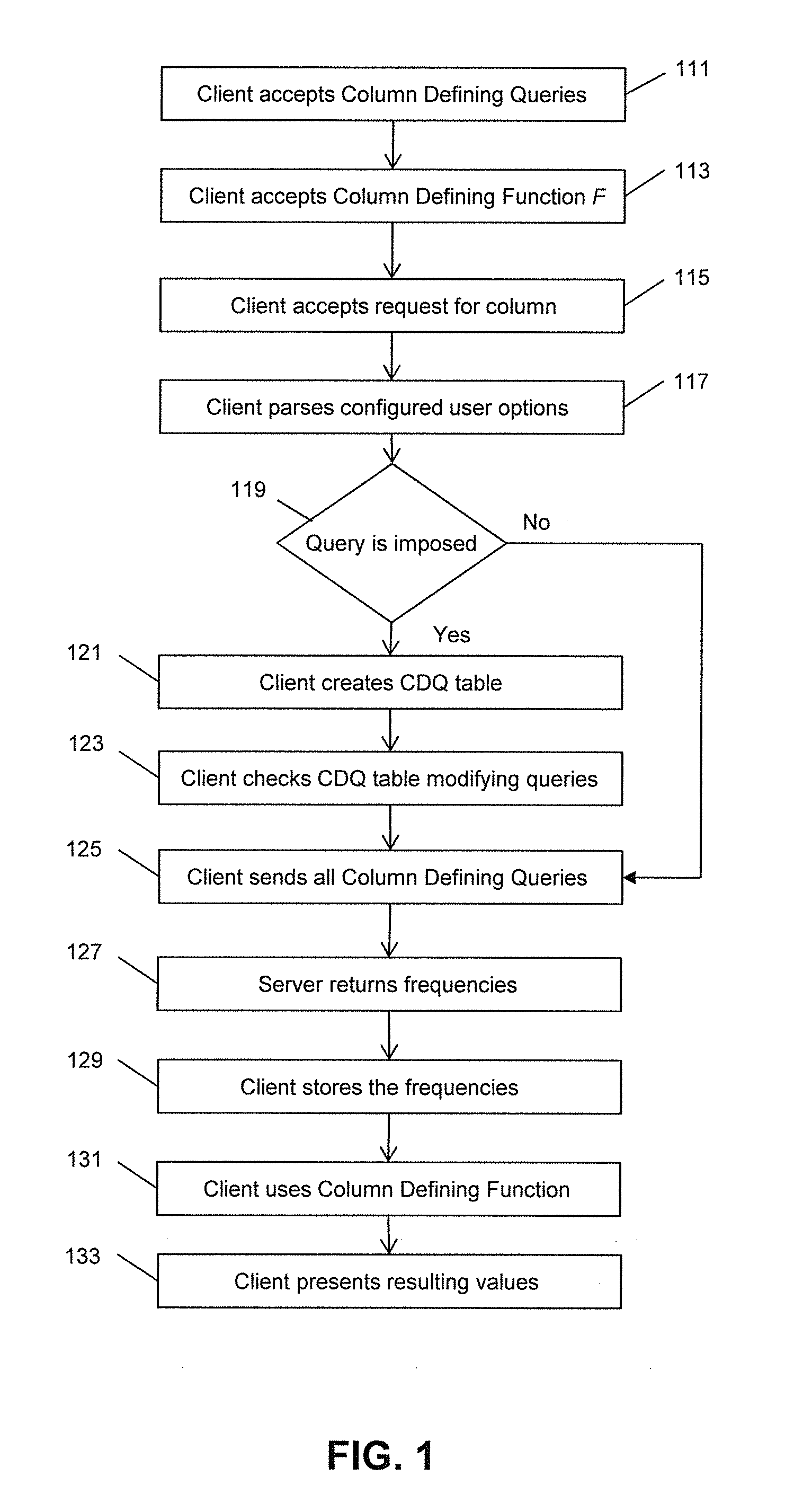Data analytics with navigation (DAWN) using associations between selectors (TERMS) and data items
a data analytics and data item technology, applied in the field of database operations, can solve the problems of serious well-known problems in the functionality of the relational database, and achieve the effect of fast and relatively simple analysis and more complicated analysis
- Summary
- Abstract
- Description
- Claims
- Application Information
AI Technical Summary
Benefits of technology
Problems solved by technology
Method used
Image
Examples
example calculations
[0024
[0025]Market Share.
[0026]A simple example is the calculation of the market share of each facility providing a particular service to a community, using counts of customer encounters as the measure. Assume the database contains data about a number of facilities, each providing a number of services to customers from different regions. Each item (which in a database could be a record or a join of records) would represent an instance of a service encounter with a customer. Each item would contain a number of fields or dimensions, each describing a facet of the encounter. The following is an example of a small subset of possible facets:
[0027]1. Facets of each facility[0028]1.1 unique name or identifier[0029]1.2 location
[0030]2. Facets of service performed[0031]2.1 date[0032]2.2 revenue amount[0033]2.3 how paid[0034]2.4 service performed
[0035]3. Facets of the customer[0036]3.1 location[0037]3.2 other customer details
[0038]4. Other information
[0039]Each facet or field may be generalize...
PUM
 Login to View More
Login to View More Abstract
Description
Claims
Application Information
 Login to View More
Login to View More - R&D
- Intellectual Property
- Life Sciences
- Materials
- Tech Scout
- Unparalleled Data Quality
- Higher Quality Content
- 60% Fewer Hallucinations
Browse by: Latest US Patents, China's latest patents, Technical Efficacy Thesaurus, Application Domain, Technology Topic, Popular Technical Reports.
© 2025 PatSnap. All rights reserved.Legal|Privacy policy|Modern Slavery Act Transparency Statement|Sitemap|About US| Contact US: help@patsnap.com


